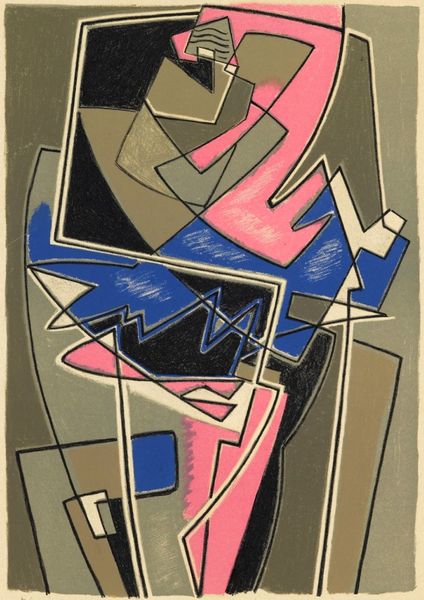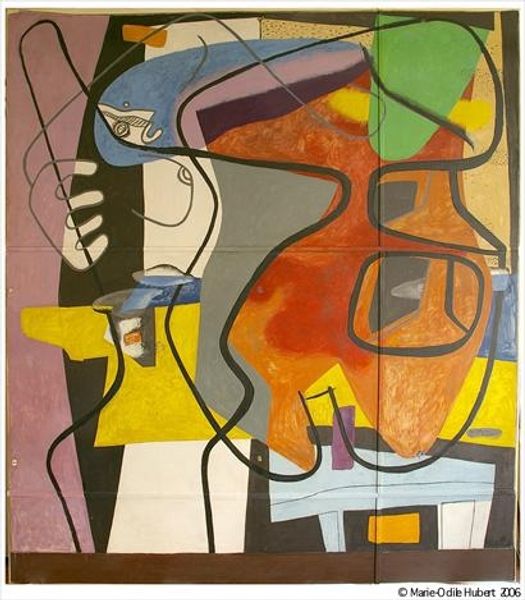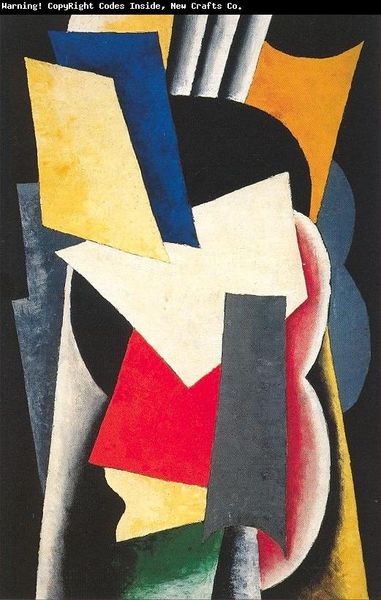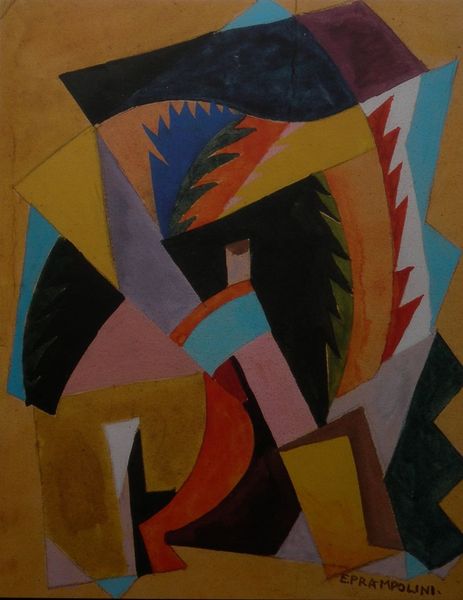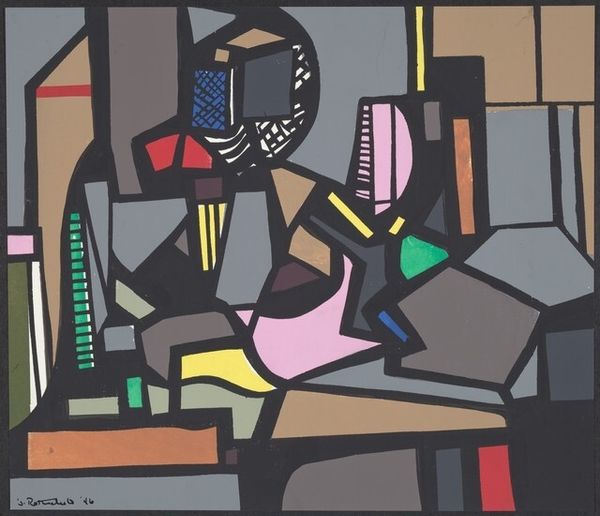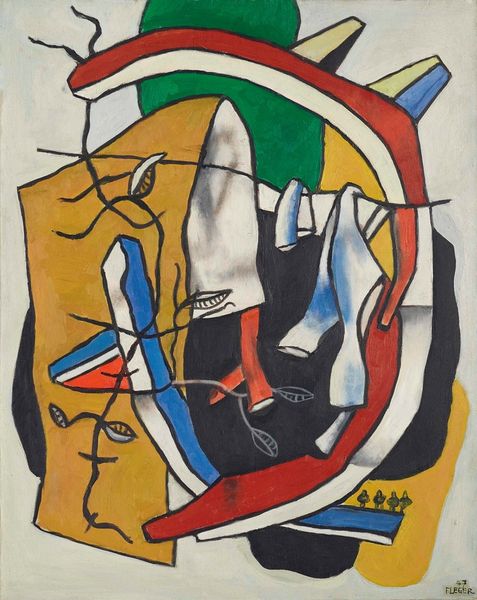
Copyright: Gino Severini,Fair Use
Editor: This is "A Dancer" by Gino Severini, painted in 1950, using acrylic paint. The angular shapes and bold colors give it such a dynamic feel, almost like it's vibrating with energy. I’m curious, what stands out to you when you look at this piece? Curator: What’s striking is how Severini, even in 1950, grapples with Futurism's legacy, decades after its initial fervor. Think about the context. Post-war Europe was reconstructing, redefining itself. How does this fragmented figure, almost exploded across the canvas, reflect that sense of a world being pieced back together? Editor: That's a great point! It definitely feels like it's capturing movement but also instability. Does the choice of a dancer as a subject matter carry a specific significance? Curator: Absolutely. Dancers, especially in the early 20th century, symbolized modernity, speed, and the changing role of the body in society. But consider how this isn't a celebratory Futurist image of the machine age. There's a fragility here, a vulnerability that wasn't present in earlier works. Severini is using that symbol of modernity to examine the state of a post-war world, and our understanding of Futurism's early promise. Editor: So, it's almost a reconsideration of Futurism, rather than a straightforward continuation? Curator: Precisely. It's a fascinating commentary on how artistic movements evolve and are re-evaluated in different historical contexts. The image reminds us of our history, how art and artists mirror, drive, and refract its values. Editor: This really offers a whole new way to think about Futurism and its long-term impact. Thanks so much for this illuminating insight. Curator: It's a pleasure! Hopefully, visitors gain a sense of how history shapes not only our world, but what we hang on the walls of galleries.
Comments
No comments
Be the first to comment and join the conversation on the ultimate creative platform.
